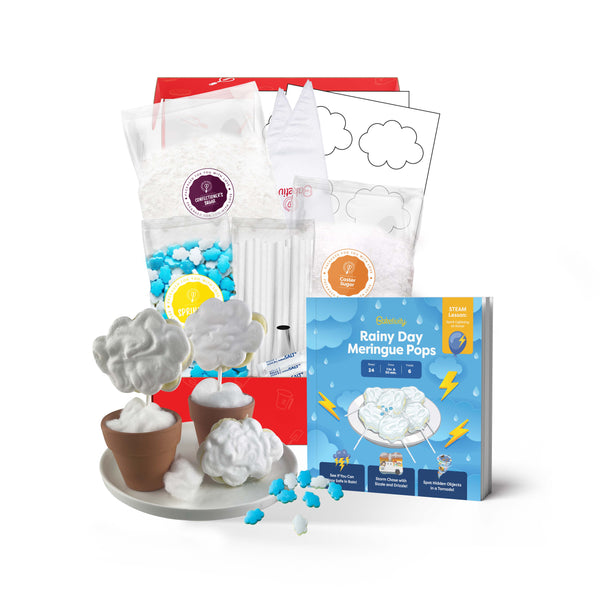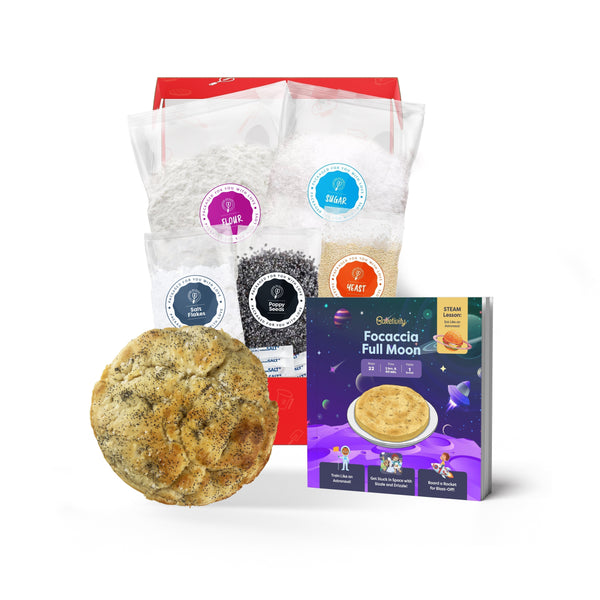Dealing with picky eaters can turn mealtime into a battlefield. We've all been there - negotiating with a toddler to eat their veggies or watching a perfectly good meal go cold. But what if we told you there's a way to turn the tables on fussy eating?
Key Takeaways
- Create a positive mealtime environment by setting regular meal schedules and making meals a family affair to encourage healthy eating habits.
- Introduce new foods strategically using repeated exposure and food chaining techniques to gradually expand your child's palate.
- Involve kids in meal planning and preparation through age-appropriate kitchen tasks and fun grocery shopping adventures.
- Model healthy eating habits by leading by example and avoiding food battles to foster a positive relationship with food.
- Get creative with meal presentation and interactive eating experiences to make food more appealing and enjoyable for picky eaters.
Understanding Picky Eating in Children
Picky eating is a common challenge many parents face with their children. It's characterized by a child's reluctance to try new foods or a strong preference for a limited range of familiar foods. Let's dive into the causes and impacts of this behavior.Common Causes of Picky Eating
Picky eating in children often stems from various factors:- Genetic predisposition: Some kids are born with more sensitive taste buds.
- Developmental stage: Toddlers may resist new foods as part of asserting independence.
- Texture sensitivity: Certain food textures can be off-putting to some children.
- Past negative experiences: A child might avoid foods associated with discomfort or illness.
- Parental influence: Kids may mimic their parents' food preferences or aversions.
The Impact of Picky Eating on Child Development
Picky eating can affect a child's growth and well-being in several ways:- Nutritional deficiencies: Limited food choices may lead to inadequate nutrient intake.
- Growth concerns: Persistent picky eating might slow physical development.
- Social challenges: Fussy eaters may feel anxious in social dining situations.
- Family stress: Mealtime battles can strain parent-child relationships.
Creating a Positive Mealtime Environment
 A positive mealtime environment encourages kids to try new foods and enjoy eating with family. By setting the right atmosphere, we can transform dinner from a battleground to a pleasant experience for everyone.
A positive mealtime environment encourages kids to try new foods and enjoy eating with family. By setting the right atmosphere, we can transform dinner from a battleground to a pleasant experience for everyone.
Setting a Regular Meal Schedule
Establishing a consistent meal schedule helps kids develop healthy eating habits. Three main meals and two snacks daily create a routine that children can rely on. This predictability reduces anxiety around food and prevents constant grazing. When kids know when to expect meals, they're more likely to come to the table hungry and willing to eat what's served. Pro tip: Use a fun, colorful chart to display meal times. Let kids decorate it with stickers or drawings to get them excited about the schedule.Making Meals a Family Affair
Turning mealtimes into family events fosters a sense of togetherness and makes eating more enjoyable. When everyone sits down together, kids are more likely to mimic good eating habits. Plus, it's a great opportunity to catch up on each other's days. Here's how to make family meals more engaging:- Share the day's highlights: Ask each family member to share their "rose" (best part) and "thorn" (challenging part) of the day.
- Play word games: Try the alphabet game with food names or "I Spy" with items on the table.
- Rotate conversation starters: Put fun questions in a jar and take turns picking one each meal.
Introducing New Foods Strategically
 Introducing new foods to picky eaters requires patience and creativity. We've found effective strategies to expand children's palates without causing mealtime battles.
Introducing new foods to picky eaters requires patience and creativity. We've found effective strategies to expand children's palates without causing mealtime battles.
The Power of Repeated Exposure
Repeated exposure is key to overcoming food aversions. Kids often need to see, smell, and taste a new food multiple times before accepting it. We recommend offering a new food at least 10-15 times before deciding if a child truly dislikes it. This approach works because familiarity breeds comfort. Try these tactics:- Serve small portions of new foods alongside familiar favorites
- Encourage touching and smelling the food without pressure to eat it
- Model enjoying the new food yourself
- Praise any interaction with the new food, even if it's just a lick or nibble
Using Food Chaining Techniques
Food chaining is a clever way to expand a child's diet gradually. It involves introducing new foods that are similar to ones the child already enjoys. This technique builds on existing preferences, making new foods less intimidating. Here's how to use food chaining:- Start with a food your child likes
- Identify its key characteristics (color, texture, shape, flavor)
- Find a new food with similar traits
- Introduce the new food alongside the familiar one
- Try sweet potato fries (similar shape and texture)
- Move to roasted carrot sticks (similar shape, different texture)
- Progress to raw carrot sticks (similar shape, different texture and temperature)
Involving Kids in Meal Planning and Preparation
Engaging children in meal planning and preparation is a powerful way to combat picky eating. By involving kids in the process, we create a sense of ownership and excitement around food.Age-Appropriate Kitchen Tasks
Kids of all ages can contribute to meal preparation. Toddlers can wash fruits and vegetables or tear lettuce for salads. Preschoolers might measure ingredients or mix batters. Older children can chop vegetables (with supervision) or follow simple recipes. Here's a quick guide:- 2-3 years: Stirring, pouring pre-measured ingredients
- 4-5 years: Mashing potatoes, kneading dough
- 6-8 years: Using a peeler, cracking eggs
- 9-12 years: Using a can opener, following recipes independently
Grocery Shopping Adventures
Turn grocery shopping into a fun, educational experience. Let's make it a game! Can your little ones spot five red fruits? How about finding three vegetables that start with the letter 'C'? Here are some ways to make shopping exciting:- Create a scavenger hunt list
- Let kids pick a new fruit or vegetable to try each week
- Teach them to read nutrition labels
- Compare prices and practice math skills
Modeling Healthy Eating Habits
We play a crucial role in shaping our children's eating habits. By modeling healthy behaviors and creating a positive food environment, we can help our kids develop a healthy relationship with food.Leading by Example
Kids are like little sponges, soaking up everything we do. When it comes to eating, they're watching us like hawks. So, let's make our plates colorful with a variety of fruits and veggies. Try new foods with enthusiasm, even if it's a veggie you're not crazy about. Remember that time you accidentally bit into a lemon thinking it was an orange? Share that story and laugh about it with your kids. It shows them that trying new things can be fun, even when they don't turn out as expected. What's your favorite way to eat vegetables? Do you have a secret recipe that makes broccoli taste like candy? Share these tips with your kids and get them excited about healthy eating. Make it a game to see who can crunch their carrots the loudest or who can make the silliest face while trying a new food.Avoiding Food Battles
Ever feel like mealtime is a battleground? Let's wave the white flag and call a truce. Instead of forcing kids to eat everything on their plate, offer a variety of healthy options and let them choose. This puts the ball in their court and takes the pressure off everyone. Think of it like a buffet. You wouldn't force yourself to eat everything at a buffet, right? So why do we expect our kids to clean their plates? By giving them choices, we're teaching them to listen to their bodies and make good decisions. Here's a funny thought: imagine if your boss forced you to eat everything in the office fridge. Sounds ridiculous, doesn't it? That's how our kids feel when we try to control every bite they take. Let's loosen the reins a bit and trust that they'll learn to make good choices over time. Remember, it's not about winning the food battle; it's about creating a peaceful, enjoyable mealtime experience for everyone. What strategies have you found helpful in avoiding food battles? Share your successes (and your hilarious failures) with other parents. We're all in this together, and sometimes the best solution comes from a fellow parent who's been in the trenches.Creative Presentation and Food Preparation
Making meals visually appealing and creating fun, interactive eating experiences can transform picky eaters into adventurous food explorers. Let's dive into some creative strategies that'll make mealtime a blast for the whole family.Making Meals Visually Appealing
Kids eat with their eyes first, so let's turn those plates into works of art! We can arrange food into fun shapes or characters. How about turning broccoli into trees and mashed potatoes into clouds? Or creating a smiley face with cherry tomatoes for eyes and a carrot stick for a mouth? It's amazing how a little creativity can make veggies exciting. Here are some quick ideas to jazz up meals:- Use cookie cutters to shape sandwiches or fruits
- Create rainbow plates with colorful fruits and veggies
- Serve food in unexpected containers like muffin tins or ice cube trays
- Make food kebabs with alternating colors and textures
Fun and Interactive Eating Experiences
Turning mealtime into playtime can work wonders for picky eaters. We can make eating an adventure that kids look forward to. Here are some ideas to get started:- Theme nights: Host a "Taco Tuesday" or "Breakfast for Dinner" night
- Build-your-own meals: Set up a DIY pizza or salad bar
- Picnic-style dining: Spread a blanket on the floor for an indoor picnic
- Blindfolded taste tests: Challenge kids to guess foods by taste and texture
- Eating with chopsticks or other unusual utensils
Addressing Underlying Issues
Picky eating often stems from deeper issues that require our attention. We'll explore common underlying factors and offer practical solutions to help children overcome their food-related challenges.Sensory Sensitivities and Textures
Many kids with picky eating habits have sensory sensitivities. These children might struggle with certain food textures, smells, or tastes. To address this:- Introduce new textures gradually: Start with smooth foods and slowly progress to more complex textures.
- Offer a variety of cooking methods: Try roasting, steaming, or pureeing vegetables to find a texture your child prefers.
- Use sensory play: Encourage your child to touch, smell, and explore foods without pressure to eat them.
- Pair new textures with familiar flavors: This can help make the transition easier for your child.
Anxiety and Control Issues Around Food
Some children develop anxiety or control issues around food, which can lead to picky eating. Here's how we can address this:- Create a calm eating environment: Keep mealtimes relaxed and free from pressure or distractions.
- Offer choices: Let your child choose between two healthy options to give them a sense of control.
- Establish a routine: Regular meal and snack times can help reduce anxiety around food.
- Use positive language: Focus on the food's qualities rather than whether it's "good" or "bad."
Seeking Professional Help When Needed
Sometimes, picky eating goes beyond typical childhood behavior. We'll explore when it's time to consult experts for additional support and guidance.When to Consult a Pediatrician or Nutritionist
Is your little one's picky eating driving you bananas? You're not alone! Many parents feel like they're in a food fight with their kids. But when does fussy eating cross the line from frustrating to concerning? Here are some signs it's time to call in the pros:- Significant weight loss or poor growth
- Extreme food aversions or limited diet (eating less than 20 foods)
- Gagging or vomiting when trying new foods
- Nutritional deficiencies or constant illness
- Mealtime anxiety or tantrums lasting more than a month
Types of Specialists and Their Roles
When it comes to tackling picky eating, there's a whole team of experts ready to help:- Pediatricians: Assess overall health and growth
- Registered Dietitians: Provide nutrition guidance and meal plans
- Occupational Therapists: Address sensory issues related to food
- Speech-Language Pathologists: Help with chewing and swallowing difficulties
- Psychologists: Manage anxiety or behavioral issues around food
What to Expect During a Professional Consultation
Heading to a specialist for your child's picky eating? Here's what you can expect:- Detailed health history: Be ready to spill the beans on your child's eating habits
- Physical examination: The doc will check for any underlying medical issues
- Dietary assessment: Time to reveal your kiddo's food diary (yes, even the secret candy stash)
- Behavioral evaluation: They'll observe your child's reactions to food
- Customized treatment plan: You'll get a roadmap for tackling picky eating head-on
Implementing Professional Recommendations at Home
Got your marching orders from the specialist? Here's how to put them into action:- Start small: Rome wasn't built in a day, and neither are adventurous eaters
- Be consistent: Stick to the plan like glue (or peanut butter, if that's more your style)
- Involve the whole family: Make it a team effort – even recruit grandma as your sous chef
- Track progress: Keep a food diary to celebrate wins (no matter how small)
- Stay positive: Remember, every bite is a step in the right direction




